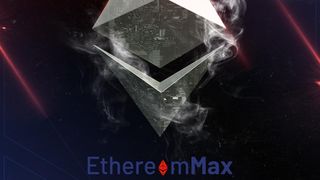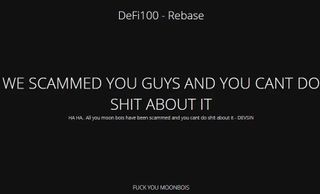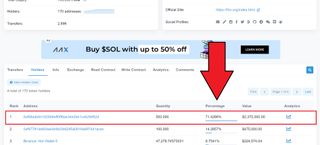I made my own cryptocurrency in 2 minutes — here’s why that’s dangerous
This is not financial advice. This is for educational purposes only. Please note that cryptocurrency is a highly volatile, extremely risky asset class.
“I made DOGE in like 2 hours,” Dogecoin co-founder Billy Markus said flippantly after someone asked whether he considered the environmental impact of his meme token.
Dogecoin, launched in 2013, was supposed to be a joke — a total mockery of the cryptocurrency craze. Eight years later, Markus is now facing a swarm of maniacal #DogeArmy zealots who are desperate for him to do something, anything, to help drive DOGE to a dollar.
“I left the project over seven years ago due to harassment from the [Dogecoin] community, and now I’m being harassed again,” Markus tweeted in January. “I just want to offer some perspective of what it feels like to have a mob demand you to do something for them on a project that you have no current involvement in.”
Little did Markus know that Dogecoin, his Frankenstein crypto creation, would inspire a movement far more sinister than a passionate posse with allegorical pitchforks. Eager to mimic DOGE’s meteoric rise to fame and fortune, a tsunami of shitcoins flooded the cryptocurrency world with absurd names like ElonDoge, Snoop Doge, Doge Killer, and my favorite, DeezNuts. Unlike Markus, however, these shitcoin owners likely launched their altcoins (non-Bitcoin digital assets) without an ounce of coding knowledge — and it probably took them less than five minutes.
This opened the floodgates for all the rug pullers (shitcoin scammers who deceive, thieve and leave) to take advantage. According to TokenSniffer, since January of this year, nearly 2,500 crypto tokens were flagged as scams.
How to launch a shitcoin in two minutes
“Anyone can make a shitcoin, bro,” a Discord user said while streaming his Bitcoin technical analysis on a crypto server. “All you need is a couple of bucks and a Waves account — it only takes a few minutes.”
“Is this true?” I wondered. Out of curiosity, I signed up for a Waves account and timed myself to see how long it would take to launch my own cryptocurrency. Surely it can’t be that easy, right?
I clicked on “Create an Asset” and I was prompted to type in the name of my cryptocurrency (I went with Laptop Mag Token, of course), a description and the total asset supply (1 million).
I was asked whether I wanted to make Laptop Mag Token reissuable or not. In other words, selecting “reissuable” would allow me to increase the total supply of Laptop Mag Token at any time. I selected “not reissuable”; Laptop Mag Token is too precious to be some basic token that can be digitally reprinted all willy nilly.
By the time I finished the form and clicked “Generate Asset,” I looked at the timer and it only took me two minutes. That’s it! It only took me two minutes to make a cryptocurrency — and I didn’t need a lick of coding knowledge. (It’s worth noting that you also need to purchase one Waves coin to make a cryptocurrency on the site, which costs about $14 as of this writing.)
Shilling scammy shitcoins
The Discord user who tipped the cryptocurrency group about the easy shitcoin-making process spurred a dark discussion. “Let’s say I decided to launch a token to rug pull a few suckers, would I get caught?” a participant asked. There was an awkward pause.
“Don’t do it, bro!” one said, breaking the silence. “Well,” another responded, “you could get away with it if you know how to cover your digital tracks correctly.” The two then began brainstorming how they would execute a scammy shitcoin launch. Marketing, of course, was one of the topics. “We could just pay $100 to some dumb celebrity off Cameo and get ‘em to shill our token.”
The Office’s Leslie David Baker, unfortunately, may have been a crypto creator’s so-called “dumb celebrity” after he went viral for promoting the Stanley Nickel Token. (What’s next, Dwight Shrute Bucks?)
Some media outlets (e.g. Uproxx) claim that Baker partnered with Rocket Bunny to launch a cryptocurrency that celebrates his popular role on The Office. When I watched the video, it seemed as if Baker was reading a script and couldn’t understand a word that came out of his mouth. Baker, by the way, is on Cameo and selling his services for $350 a pop. We reached out to Baker’s team for comment, but haven’t heard back.
I’ve even seen a TikTok influencer admit that he was offered tens of thousands of dollars to hawk a fraudulent meme token to his humongous following. The team behind Ethereum Max (a shitcoin that has nothing to do with Ethereum, by the way) managed to get Kim Kardashian, Floyd Mayweather and Paul Pierce on board to market their eMax token. My heart goes out to all those fans who took a chance on eMax. Since Kardashian’s eMax ad in mid-June, the price tanked and it’s been trading sideways ever since.
Although Stanley Nickel Token and eMax are purposeless cryptocurrencies, that doesn’t necessarily mean they’re set up for rug pulls (though some detractors argue that they’re Ponzi schemes). For example, Dogecoin, in my humble opinion, is a shitcoin, but it has no malicious intent.
That being said, a sneaky scammer with a cold, black heart can pay a TikToker, a YouTuber or celebrity to hawk their two-minute shitcoin, and when impressionable fans rush to purchase it, they’ll sell their massive holdings, making the price plummet. As the crypto creator skidaddles with their new fortunes, fans are left with a worthless altcoin. Womp, womp! This, my friends, is called a crypto pump and dump (or rug pull), which involves the act of artificially inflating a digital asset’s price with positive fanfare and selling the overvalued tokens after a bunch of poor saps buy in.
Shitcoins scamming is now more streamlined
Lamenting the catastrophe of WhaleFarm, a pump-and-dump crypto that crashed from $200 to $0 and stole $2 million from investors, Bloomberg columnist Matt Levine said, “[Decentralized finance] seems to offer some real innovation in making these sorts of scams more efficient.”
There have been countless rug pulls in the crypto space like WhaleFarm this year, but none are more memorable than DeFi100’s pump-and-dump saga. In a typical rugpull, a bunch of guileful, anonymous founders will take off with everyone’s money, abandon their fraudulent crypto project and disappear into the void. However, the crypto creators behind DeFi100 allegedly decided to do things — erm — a little differently.
On May 22, a nasty message popped up on DeFi100’s website: “We scammed you guys and you can’t do shit about it. Haha. All you moonbois have been scammed!”
According to Twitter analyst CryptoWhale, the DeFi100 reportedly fled with $32 million (but it’s unclear how they came up with this figure). The next day, DeFi100’s Twitter account denied the allegations and claimed that their website was hacked. Who knows the truth? Either way, DeFi100’s token price nosedived and its investors got screwed.
Hell, even billionaire investor and Shark Tank star Mark Cuban suffered a painful rug burn in mid-June when Iron Finance, a decentralized finance project he shilled, crashed. Its TITAN token dropped to $0 from $60 in just 24 hours. While many media outlets called this a rug pull, Iron Finance denied these claims and said TITAN’s collapse was the result of panic selling.
As you read earlier, it didn’t take me too long to make my own token and it’s pretty damn cheap. As such, it doesn’t take much for some small-time hustler to whip up a stupid new shitcoin with some combo of the words “Doge,” “Moon,” “Rocket” and “Elon,” and with a few keystrokes and some smart marketing — bam! — he’s got a new wad of ill-gotten cash.
Telltale signs of a shitcoin scam
A new altcoin launched by an anonymous team should give you pause. Sure, many legit cryptocurrencies are launched by incognitos (e.g. Bitcoin), but I can’t help but ask, “If you’re not doing anything wrong, why are you hiding?” SafeMoon’s team, for example, is not anonymous; the founders regularly appear on Twitch livestreams for Q&As and have frequent communication with token holders.
Some crypto pundits also advise investors to look at an altcoin’s whitepaper, a document written by the founder that offers insight into its roadmap, mission and more. A missing whitepaper or a sloppy one might indicate a shitcoin scam; it’s not foolproof, of course — a determined shitcoin scammer may take the time to write a beautifully written whitepaper that reads like a New York Times Best Seller.
Unrealistic projection of returns to entice get-rich-quick investors is another red flag. If you spot the founders going on and on about how their new shitcoin will “1000x,” it’s probably a pump and dump.
However, the most useful skill you can develop is learning how to read an altcoin’s technicals on EtherScan (if it’s an Ethereum-based token) or BscScan (if it’s a Binance Smart Chain-based token). One of the most well-known red flags is a whale holding massive amounts of the altcoin. You can check for this by simply going to “Holders” on the altcoin’s EtherScan or BscScan page. As an example, take a look at the token below. Its largest holder is PancakeSwap, a liquidity provider, which is perfectly fine and normal. The token’s supply is divided pretty evenly across all wallets.
However, the following token is a red flag because an unknown wallet is holding a whopping 71% of the token’s supply.
Other ways to spot a rug pull is to read the altcoin’s contract, which can also be found on EtherScan/BscScan. This requires some coding knowledge, but there are some excellent YouTube tutorials that give you insight on how to skim through contracts and spot red flags.
If all of this is too overwhelming, you can use TokenSniffer, which was developed by a software engineer who fell victim to rug pulls so frequently that he decided to launch the site to help others audit suspicious shitcoins. All you need to do is copy and paste the altcoin’s wallet address into TokenSniffer’s search bar, and it’ll spit out an automated report on whether its contract is suspicious or not. It’s not 100% accurate, but it helps.
Bottom line
Perhaps when Markus and his co-founder Jackson Palmer developed Dogecoin that one fateful day, there was a skills gap that thwarted the average Joe from launching their own cryptocurrency. In recent years, however, sites like Waves popped up, giving everyone the opportunity to create their own altcoins sans coding knowledge.
On the plus side, this makes the crypto-creation world more accessible for those who want to launch genuine, good-faith altcoin projects. On the downside, the cryptocurrency realm is increasingly becoming a cesspool of shitcoins solely made for rug-pull schemes. As long as one has a few minutes and a couple of bucks to spare, they can bait investors and run off with their hard-earned money.
To play it totally safe, avoid altcoins that are only on decentralized exchanges (DEX) like PancakeSwap and UniSwap (they don’t audit tokens). If they’re also on other established platforms (e.g. KuCoin, Coinbase, etc.), then you can be more confident that there’s no shady business going on behind the scenes.
As always, exercise proper risk management before investing. Cryptocurrency is an extremely risky asset class.
from WordPress https://ift.tt/2Uq9zOV














Comenta